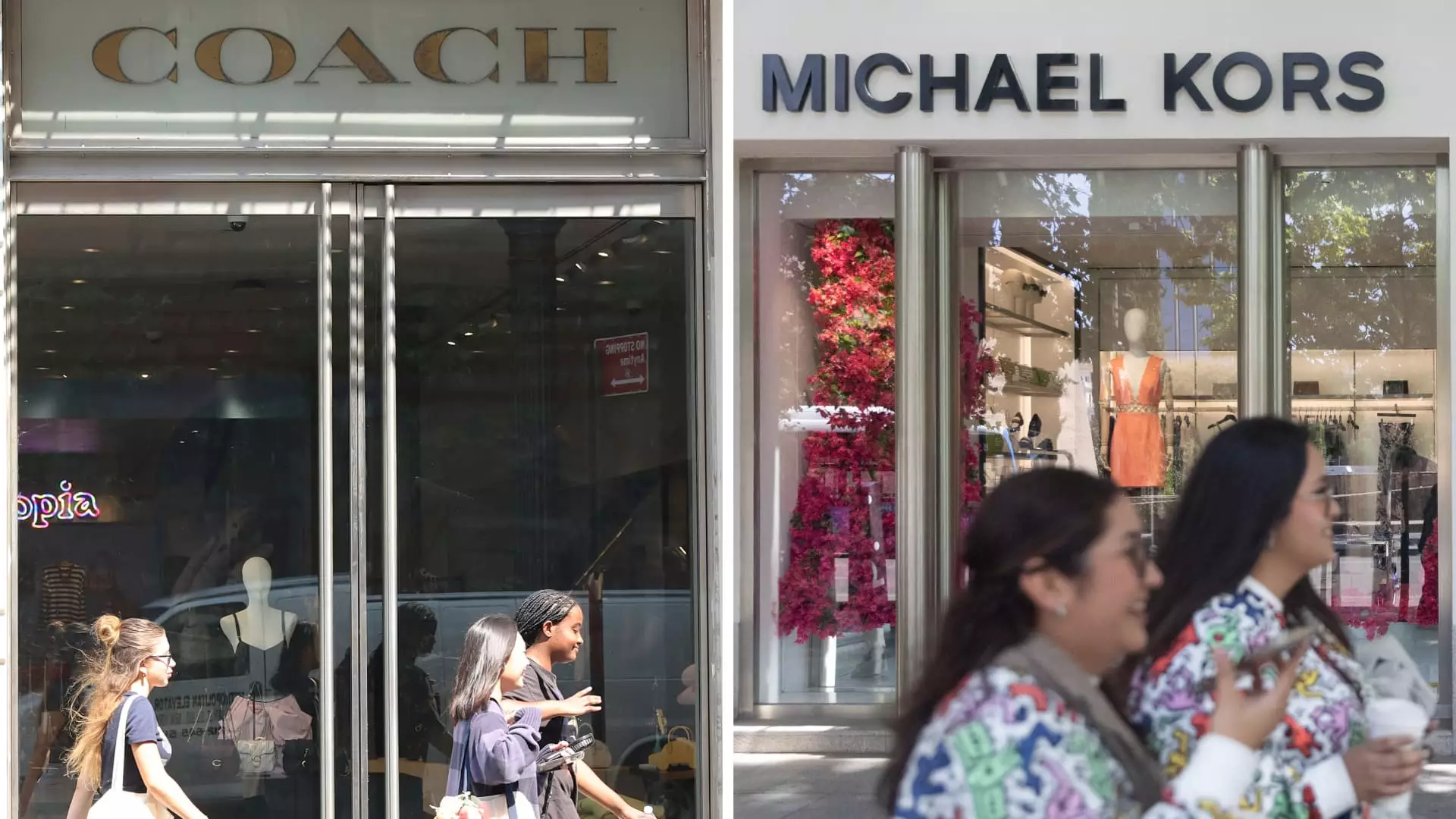The recent legal intervention by a federal judge to block Tapestry’s acquisition of Capri Holdings marks a significant moment in the luxury fashion industry. Judge Jennifer Rochon issued a preliminary injunction following the Federal Trade Commission’s (FTC) objections to the $8.5 billion merger, which aimed to consolidate America’s two largest luxury fashion houses under one umbrella. This article delves into the implications of this decision, the competitive landscape of the fashion industry, and the potential ripple effects on both companies and consumers.
The proposed merger, which would unite Tapestry’s well-known brands such as Coach, Kate Spade, and Stuart Weitzman with Capri’s prestigious names including Versace, Jimmy Choo, and Michael Kors, was positioned as a strategic move to bolster market presence and respond more effectively to changing fashion trends. However, the reaction to the judge’s ruling was swift and polarizing. Tapestry’s stock price soared by 10% post-announcement, indicating investor optimism regarding the company’s long-term resilience, while Capri’s shares plummeted nearly 50%, suggesting deep market concerns about the deal’s future and profitability.
Tapestry expressed its disappointment regarding the ruling, announcing plans to appeal, stating its belief in the legality and economic rationale of the merger. The company stressed the fluid and competitive nature of the fashion market, asserting that the merger would not only benefit them but also enhance consumer choice. They emphasized, “We face competitive pressures from both lower- and higher-priced products,” arguing that the transaction would ultimately bring about improved offerings for consumers.
At the heart of the FTC’s opposition was the fear that merging these giants would reduce competition significantly, particularly in the affordable luxury handbag sector. The FTC argued that consolidating Tapestry and Capri’s brands could lead to increased prices and decreased quality of products available to consumers, which is particularly concerning amid a current climate of heightened price sensitivity due to inflation.
This case unfolds against a backdrop of greater regulatory scrutiny in various sectors, including fashion, food, and technology. The Biden administration, along with federal regulators, has been vocal about maintaining a competitive market landscape to protect consumers from rising prices. The FTC’s Chair Lina Khan has been particularly aggressive in addressing monopolistic behaviors across industries. The ruling serves as a notable example of these regulatory efforts in action, indicating a shift towards stricter oversight in merger approvals.
During the court proceedings, the FTC presented research suggesting that the merger would likely enable the combined entity to raise prices and invest less in product quality, depriving consumers of valuable options. On the contrary, Tapestry and Capri’s representatives contended that they do not primarily compete with each other and that this merger would ultimately provide consumers with a broader array of choices as they adapt to swiftly changing trends, particularly those influenced by social media platforms like TikTok.
The merger agreement included substantial financial implications for both companies. Tapestry agreed to reimburse Capri for expenses if the merger does not receive regulatory approval, with potential payouts ranging from $30 million to $50 million. Capri also faces a hefty breakup fee of $240 million should it decide to withdraw from the merger. This financial architecture highlights the significance both companies place on the deal and underscores the weight of the FTC’s ruling on their financial health.
The implications extend beyond just financial metrics for Tapestry and Capri; they ripple through industry dynamics. The luxury fashion sector is thriving in a competitive market driven by rapidly evolving consumer preferences. The temporary halt to this merger allows other players, both established and emerging, the opportunity to seize market share, especially as consumers are increasingly seeking both quality and affordability.
The blocking of Tapestry’s acquisition of Capri may serve as a pivotal moment not just for the involved companies, but for the broader landscape of the luxury fashion industry. With the FTC’s renewed commitment to rigorous scrutiny of mergers, companies may need to rethink their strategies for expansion and collaboration. As consumers become more discerning and price-sensitive in an evolving economic landscape, the competitive dynamics in the fashion market will undoubtedly continue to shift.
Going forward, both Tapestry and Capri will likely rethink their approach to growth, possibly seeking other avenues to innovate and attract consumers. Meanwhile, the regulatory environment persists as a formidable barrier for large-scale mergers, reinforcing the notion that while consolidation may seem advantageous on the surface, its repercussions can profoundly impact competition and consumer experience at the retail level.

